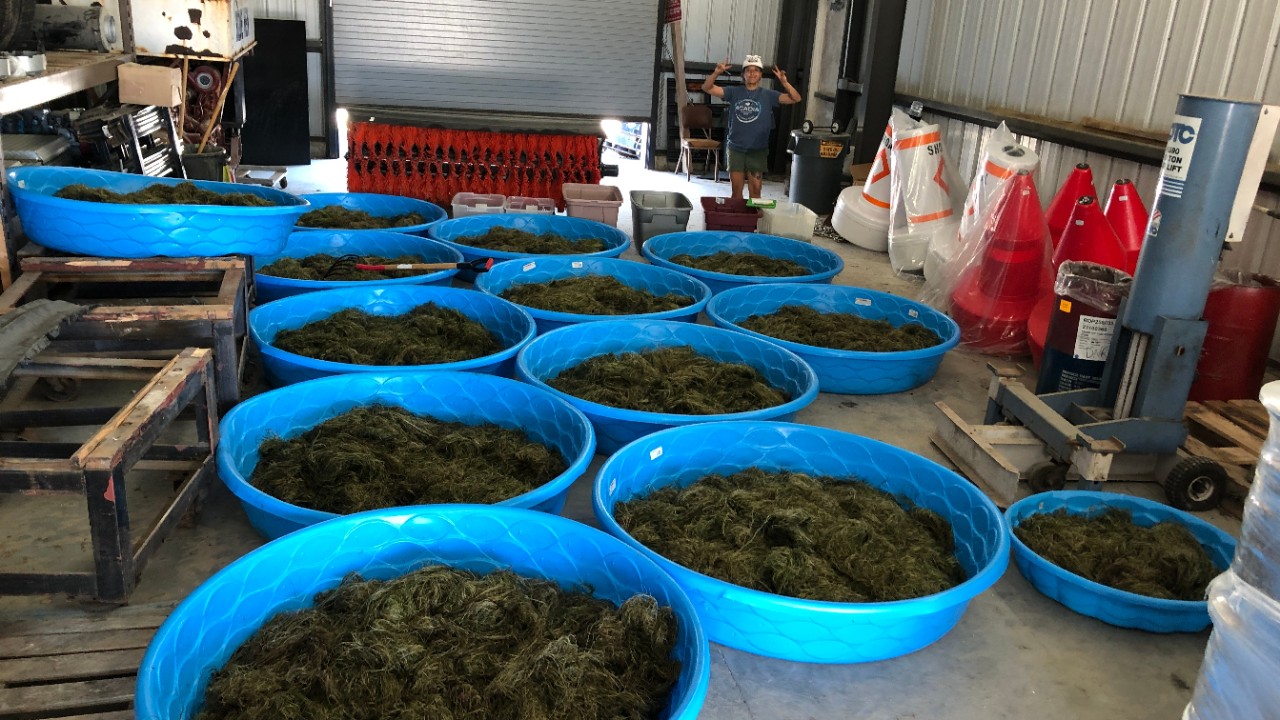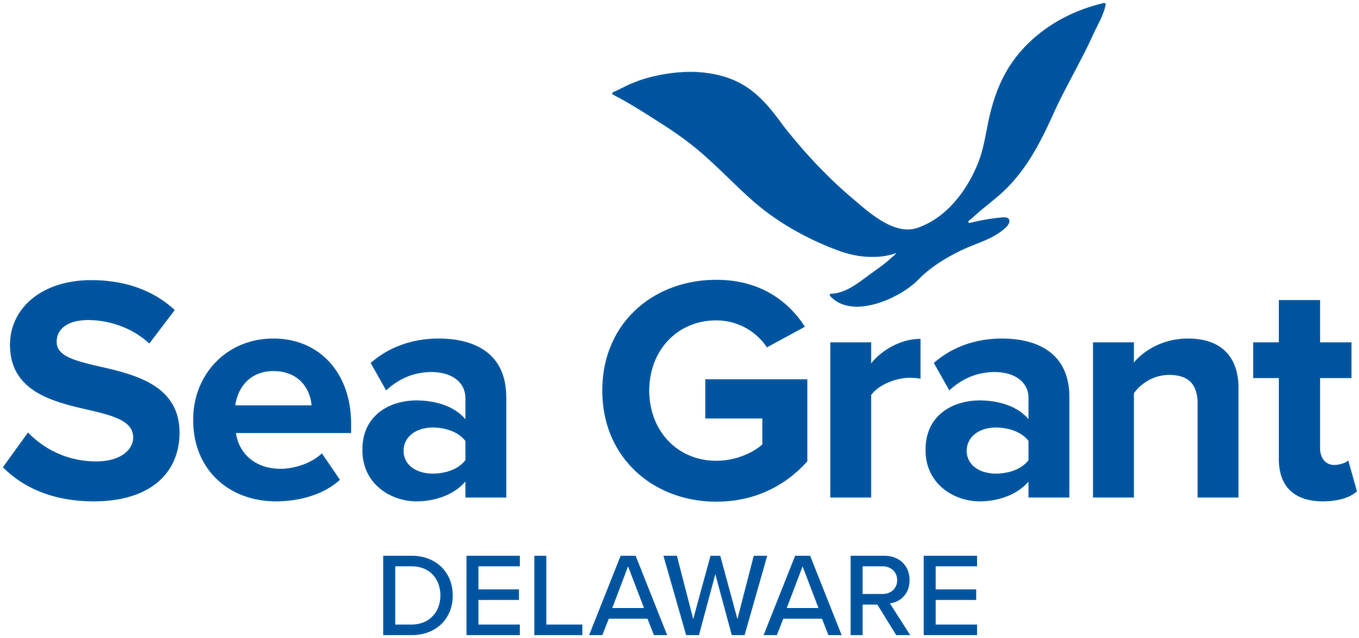
Category: Partnerships

Innovative approach to waterway management
June 18, 2025 Written by Adam Thomas | Photos courtesy of Brittany Haywood
Delaware Sea Grant works with residents to address submerged aquatic vegetation in South Bethany canals
In the canals of South Bethany, Delaware, an environmental mystery is unfolding. Widgeon grass, a form of submerged aquatic vegetation (SAV), has appeared and nobody is quite sure how it got there. Not only has it taken up a mysterious residency in these man-made canals, but it also appears to be thriving.
This is proving to be a double-edged sword to homeowners along the South Bethany canals. The presence of SAV reflects improving environmental conditions and brings with it a range of ecological benefits. These grasses provide crucial habitat for fish and serve as sediment traps which lead to enhanced water quality—contributing to erosion control by stabilizing the canal bottom. However, as SAV continues to thrive in these areas originally designed for navigation, it also introduces new considerations for boaters. When SAV reaches the water’s surface, it can interfere with propellers or become entangled in jet skis.. This emerging interaction between ecological recovery and recreational use presents a unique opportunity to explore innovative management approaches that balance habitat benefits with safe waterway access.
Brittany Haywood, coastal ecology specialist for Delaware Sea Grant at the University of Delaware, works with the Delaware Department of Natural Resources and Environmental Control (DNREC) and the Delaware Center for the Inland Bays to study the widgeon grass and help the town of Bethany manage the species.
“We’re not sure how it got there and why it is doing so well as opposed to all the other locations it could have settled,” said Haywood. “Those canals are man-made, and it’s an unusual place for the plant to settle. Since the canals are an engineered habitat, the widgeon grass most likely wasn’t there to begin with, and could have been transported from ducks, fish or even boats.”
Haywood said they were informed about the SAV bed and its plentiful flowering and seed shoots a few years ago. Ever since, the organizations have been harvesting the fseeds from the SAV bed and processing them.
Doing this serves two purposes: the researchers can take the flowering and seed shoot, process them, and plant the seeds in other locations throughout Delaware , and it helps to keep the SAV beds from getting larger and posing a greater hazard to boaters.
“We’ve gone out with a bunch of people and pulled up these flowering and seed shoots, because you can pull it up without removing the plant,” said Haywood. “That is the key. State protections of the underwater plant mean we can’t remove the plants, but we can remove the flowering shoots because they just break off naturally.”
The collected shoots have been processed at the oyster hatchery located on UD’s campus in Lewes, and are slated to be processed at a new DNREC facility in Lewes for 2025. Haywood explained that processing involves arranging the shoots in baby pools located at the DNREC Lewes facility so they can mature. After a few weeks, the shoots are moved into big water tanks and air is vigorously pumped through the tanks to separate the seeds from the plant material. The organizations then collect the seeds, store them, and use them in restoration projects.
Delaware Center for the Inland Bays has been the primary user of them thus far, having put the seeds out in Assawoman Bay and Pasture Point off the James Farm Ecological Preserve property and trialing fall and spring planting seasons.
Because the Delaware Inland Bays have almost no SAVs, the organizations want to figure out why the SAVs are thriving in the South Bethany canals and apply it to future restoration projects.
“We want to figure out why that is happening so we can figure out the best spot to plant this grass,” said Haywood. “The preliminary results show that this widgeon grass is growing in water with higher temperatures and higher turbidity or lower light available at the bottom than other areas like the Chesapeake Bay.”
Planting more SAVs in the Delaware Inland Bays would be a boon for the region, as it would help to shore up coastline and improve water quality.
“SAVs in general, no matter what species, are great habitat for fishes,” said Haywood. “The commercial fish species rely on it for a nursery habitat or to find food. It is good at erosion control and helps clean the water. They are just a great resource that will benefit the Delaware Inland Bays.”
Delaware residents interested in learning more about SAVs should visit https://www.delawaresav.org for more information.




